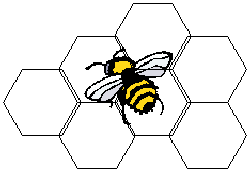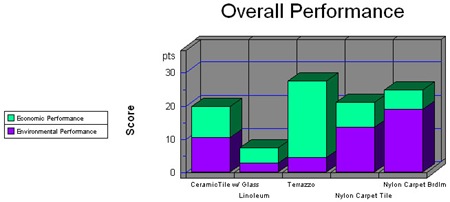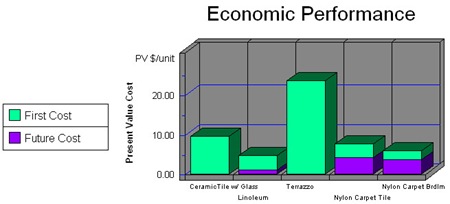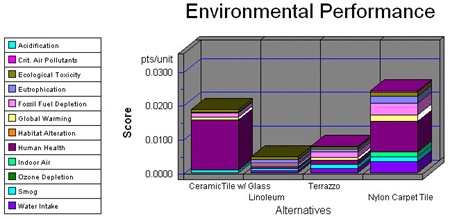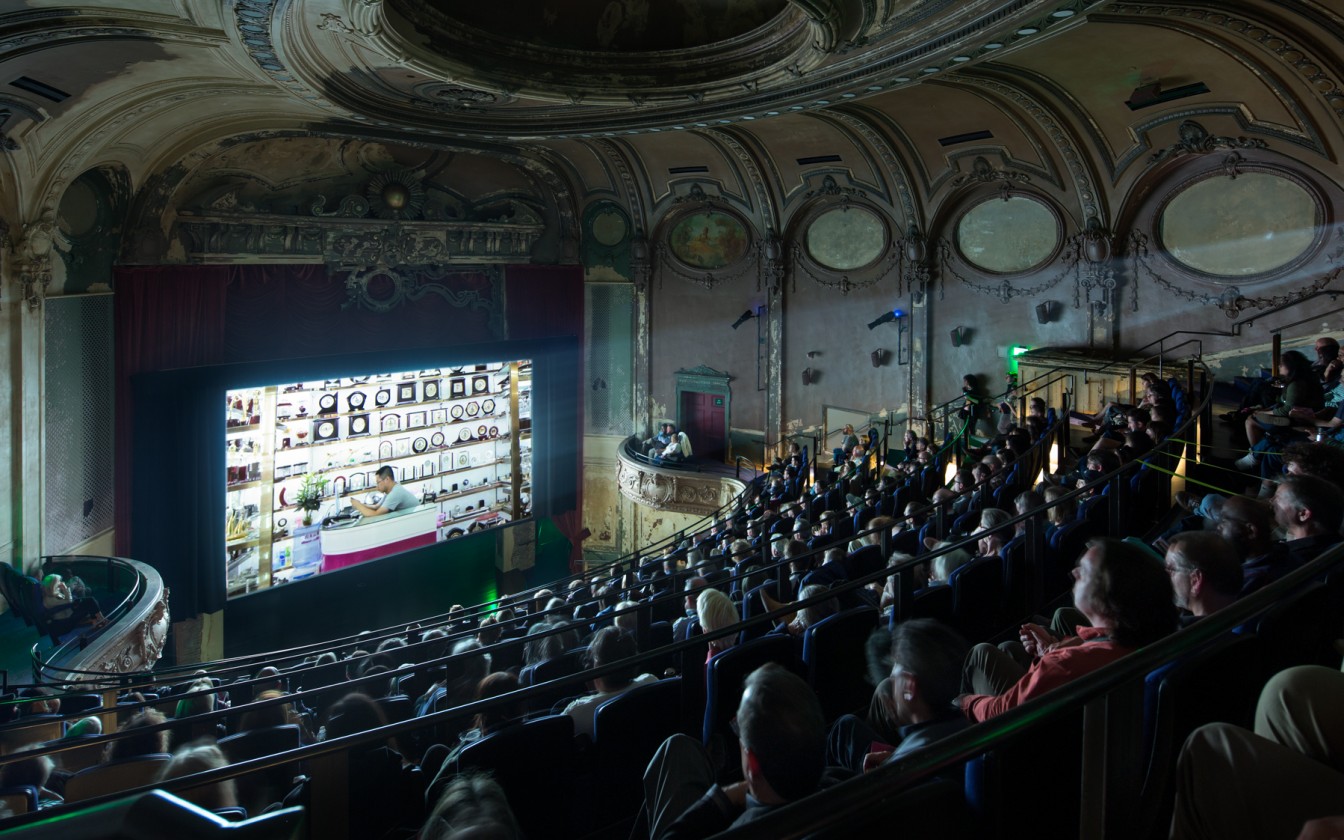1006 Morton Street
Baltimore, MD 21201
410.576.9131 | Email
August 13 2008
Life Cycle Assessment: Building for Environmental and Economic Sustainability (BEES 4.0)
The Building for Environmental and Economic Sustainability (BEES 4.0) software is a free Life Cycle Assessment tool developed by the National Institute of Standards and Technology (NIST) with the aim of empowering designers with a 'robust', user-friendly tool for making informed material decisions. Analysis is broken into two general categories, economic and environmental, which can be weighted against one another in both present and projected figures. Twelve 'impact categories' further refine the LCA analysis by 'weighting' each criteria. The process helps establish a hierarchy for evaluating LCA and gives the user some flexibility when defining the importance of one criteria versus another. The resulting process allows a designer to capture and account for the breadth of environmental and economic considerations in one software package. BEES and software of the same genre will hopefully lead to buildings that fully manifest the ideas of stewardship and sustainability.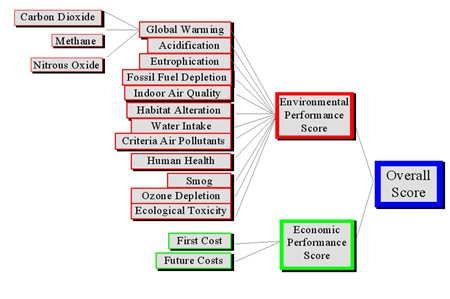
Version 4.0 of BEES is not a major overhaul from the three previous versions, adding only a few technical upgrades behind the scenes, a larger database of materials and a new weighting system for impact categories. Marginal interface improve ments were made, as illustrated by the same extremely cumbersome graphics and data reporting used since BEES version 1.0. The software is however a useful alternative to other more costly LCA tools, many of which do not have substantially better interfaces.
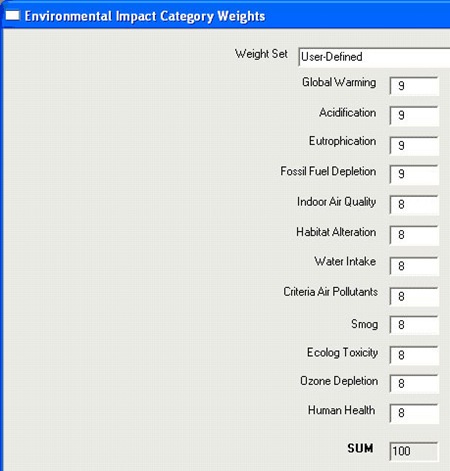
I would say that BEES 4.0 is not for the faint of heart, timid, or designers just trying to greenwash a project. BEES 4.0 software is extremely useful to designers interested in finding out the LCA impact of products they may select, but the learning curve is steep and a considerable amount of data collection and analysis is required for custom LCA analyses.
For more information please visit the BEES website or the original article (subscription/login required) from Environmental Building News.
Recent Posts
Reimagining Harborplace to Create Space for Both Private Development and Expanded Public Space » Lawyer's Mall Reconstruction Progress » Confronting the Conventions of Customary Practice » Reconceived Facades: New Roles for Old Buildings » Ivy Bookshop Opens for Business! »
Categories
Yellow Balloon Baltimore » Products + Technology » Industry + Practice » Other » Architecture »
Links
Organizations
- USGBC Baltimore Regional Chapter »
- AIA - American Institute of Architects »
- USGBC »
- The Walters Art Museum »
- Green-e »
- Center for Building Performance and Diagnostics (CMU) »
- Green Globes »
- Prefab Lab (UT) »
- Center for Sustainable Development (UT) »
- Architecture 2030 »
- Bioneers »
- Street Films »
- FreeCycle »
- Chesapeake Bay Foundation »
- Archinect »
- BD Online - The Architects Website »
- National Wildlife Foundation »
- Natural Resources Defense Council »
- Overbrook Foundation »
- Merck Family Foundation »
- Ecology Center »
- New Building Institute »
- Neighborhood Design Center »
- The Leonardo Academy »
- ZigerSnead Architects LLP »
- The Rocky Mountain Institute »
- Urban Habitats »
- ACORE - American Council on Renewable Energy »
- Parks and People Foundation of Baltimore »
- Open Society Institute of Baltimore »
- Natural Capital Institute »
- Passive House US »
- Svanen Miljomark »
- Green Restaurant Association »
- Rocky Mountain Institute »
- Green Exhibits »
- Green Roundtable »
- John Elkington - SustainAbility »
- SustainAbility »
- Building America »
- Endangered Species Program - Fish and Wildlife Service »
- Congress for the New Urbanism »
- Urban Land Institute »
- Cool Roof Rating Council »
- Montgomery County (MD) Public Schools Green Building Program »
- National Institute of Standards and Technology Software »
- Scientific Certification Systems »
- Community Greens »
- CBECS »
- CASE - Center for Architecture Science and Ecology »
Interesting Sites
- The Ecologist »
- Treehugger »
- Grist »
- WIRED »
- Planet Architecture »
- MiljoBloggAktuellt - Environmental News Blog (Swedish »
- Sustainable Design Update »
- Eikongraphia »
- World Architecture News »
- The Cool Hunter »
- Design Center »
- ZEDfactory »
- Architen Landrell Associates Ltd. »
- Environmental Graffiti »
- businessGreen »
- Best Green Blogs Directory »
- Groovy Green »
- EcoGeek »
- Urban Ecology »
- Locus Architecture »
- Urbanite »
- A Daily Dose of Architecture »
- Adaptive Reuse »
- Audacious Ideas »
- Big Green Me »
- NOTCOT »
- Sustainable Baltimore »
- Thoughts on Global Warming »
- Green Maven »
- WorldChanging »
- Go For Change »
- Building Green »
- Home Energy Magazine »
- Home Energy Blog »
- FEMA Map Service- Federal Emergency Management Association »
- Architectural Graphic Standards »
- E-Wire »
- Post Carbon Cities »
- Alt Dot Energy »
- Whole Building Design Guide »
- B'more Green »
- EJP: Environmental Justice Partnership »
- Baltidome »
- OneOffMag »
